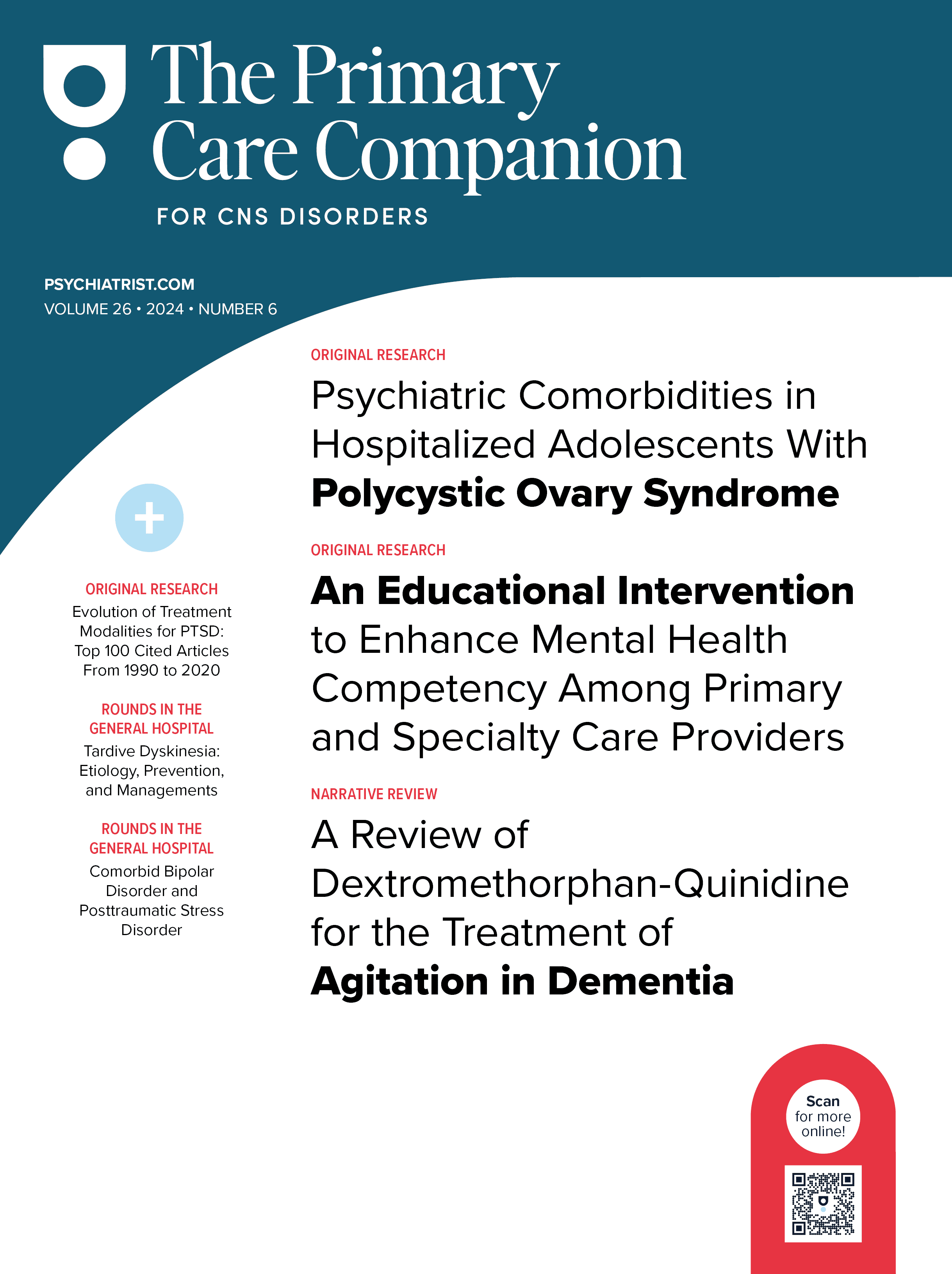Prim Care Companion CNS Disord 2021;23(3):20l02732
To cite: Rai B, Gupta R, Chakravarty R. Major depressive disorder with seasonal pattern or seasonal affective disorder: diagnostic issues with good response to agomelatine. Prim Care Companion CNS Disord. 2021;23(3):20l02732.
To share: https://doi.org/10.4088/PCC.20l02732
© Copyright 2021 Physicians Postgraduate Press, Inc.
aDepartment of Psychiatry, All India Institute of Medical Sciences, Rishikesh, India
*Corresponding author: Bhavika Rai, MD, Department of Psychiatry, All India Institute of Medical Sciences, Rishikesh-249203, India ([email protected]).
Major depressive disorder with seasonal pattern (MDD-SP) is characterized by occurrence and remission of depressive episodes during a particular season of the year, with seasonal pattern during the past 2 years.1 Contrarily, seasonal affective disorder (SAD) is characterized by depressive episodes that occur annually at the same time with prominent atypical symptoms like hypersomnia, increased appetite, and carbohydrate craving.2 It is still debated whether SAD and MDD-SP are similar or different entities.
We present the case of a patient who met some of the criteria for MDD-SP and SAD, but not all, posing a diagnostic dilemma. Moreover, the patient responded to agomelatine after failure of 2 other antidepressants.
Case Report
A 40-year-old married woman presented with complaints of persistent and pervasive sad mood, anhedonia, easy fatigability, decreased sleep and appetite, feelings of worthlessness and hopelessness, and death wishes for the past 2 months. She had experienced 8 similar episodes during the past 5 years. For the first 4 years, her episodes occurred during the winter season and self-remitted in 2 to 3 months. Relapses were frequent during the past year. She reported no significant loss. Her history was unremarkable with the exception of a sister with MDD.
Medical records were available for the past 6 months only, which showed that she was treated with sertraline 200 mg/day for 10 weeks and then fluoxetine 60 mg/day for 12 weeks with no response. Considering the possibility of MDD-SP and reports of proven efficacy of agomelatine in SAD, agomelatine 25 mg/day was started.1,3 An improvement was noted in a week, initially in sleep, followed by mood. She also started participating in the household chores by herself. Considering good response on clinical examination, the dose was increased to 50 mg/day. She recovered within the next 6 weeks.
Discussion
Although having its own status as a specifier for MDD, SAD has failed to prove its mettle in the long term as a stable diagnosis. In the case presented here, initial features were in agreement with the diagnosis of SAD without atypical symptoms and MDD-SP; however, gradually, the frequency of the episodes increased. There always remains a possibility that MDD episodes were linked to some other environmental factor other than the season. However, no such factor could be ascertained, and per DSM-5 criteria, the patient was diagnosed with MDD-SP.1
In the described case, episodes were initially present only during the winter but lost seasonality during the past year. This situation fulfils one part of the definition of MDD-SP, wherein most of the episodes occurred within a particular season, but does not fulfil another part that requires seasonal pattern in the past 2 years.1 This finding is consistent with reports4 suggesting remission or development of depressive episodes in a nonseasonal pattern among patients with an initial diagnosis of SAD.
Agomelatine not only normalizes sleep structure by readjusting disordered circadian rhythm, but also functions as a mood enhancer during the daytime.3,5 In a meta-analysis,6 agomelatine’s antidepressant efficacy and tolerability was found to be better than selective serotonin reuptake inhibitors and venlafaxine. Agomelatine was superior to many antidepressants on measures of acceptability versus efficacy, making it superior to conventional antidepressants,6 as was observed in our case.
In conclusion, SAD could be a subtype of depression rather than a specific entity, making it more of a transitory phenomenon than a durable entity. Also, antidepressants like agomelatine may be superior, especially in patients with a history of MDD-SP; however, randomized controlled trials are required for confirmation.
Published online: May 6, 2021.
Potential conflicts of interest: None.
Funding/support: None.
Patient consent: Consent was received from the patient to publish the case report, and information and has been de-identified to protect anonymity.
References (6)

- American Psychiatric Association. Diagnostic and Statistical Manual of Mental Disorders. Fifth Edition. Arlington, VA: American Psychiatric Association; 2013.
- Rosenthal NE, Sack DA, Gillin JC, et al. Seasonal affective disorder: a description of the syndrome and preliminary findings with light therapy. Arch Gen Psychiatry. 1984;41(1):72–80. PubMed CrossRef
- Srinivasan V, de Berardis D, Fornaro M, et al. Melatonin, sleep, circadian rhythm, and mood disorders. In: López-Muñoz F, Srinivasan V, de Berardis D, et al, eds. Melatonin, Neuroprotective Agents and Antidepressant Therapy. New Delhi, India: Springer; 2016.
- Young MA. Does seasonal affective disorder exist? a commentary on Traffanstedt, Mehta, and LoBello (2016). Clin Psychol Sci. 2017;5(4):750–754. CrossRef
- Zupancic M, Guilleminault C. Agomelatine: a preliminary review of a new antidepressant. CNS Drugs. 2006;20(12):981–992. PubMed CrossRef
- Cipriani A, Furukawa TA, Salanti G, et al. Comparative efficacy and acceptability of 21 antidepressant drugs for the acute treatment of adults with major depressive disorder: a systematic review and network meta-analysis. Lancet. 2018;391(10128):1357–1366. PubMed CrossRef
Please sign in or purchase this PDF for $40.
Save
Cite

